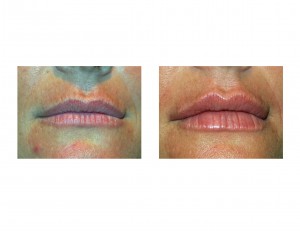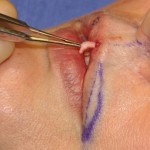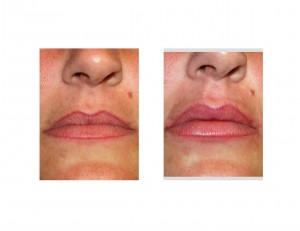The desire for fuller and more shapely lips has been achieveable for some time through injectable fillers. The ability to spot place plumping volume anywhere on the lips can really allow for some true sculpting of certain lip areas. The lips are comprised of numerous anatomic areas which are commonly injected, mainly along the vermilion-cutaneous junction (white roll) and into the body of the lip itself. That will certainly make the overall size of the lips bigger.

While injectable filler lip treatments are both immediate and dramatic, they are only temporary. Even in the most ardent and motivated patient, lip injections are not fun and can be the most uncomfortable of any facial injection treatment. (unless done under local intraoral vestibular infiltration…better but still not fun) Permanent solutions to lip augmentation have been tried with varying success. For permanent lip volume augmentation, I have found the use of Advanta soft tissue round or oval implants effective when placed in the body of the lip for horizontal volume fill.
Synthetic implants in the philtrum, however, have not been as successful. They are prone to contracture and distortion with resultant philtral asymmetry. This is because they are not rigid and are placed in the very moveable and often manipulated part of the upper lip. Think about how many times you touch and rub your upper lip…not to mention stretching and pulling it down.


This simple procedure can be done as part of any other lip procedure, usually as part of surgical augmentation procedures such as lip lifts and advancements. It is done under local anesthesia in the office with minimal swelling and rarely any bruising. There is no visible scar from the small incision in the vermilion.
The only concern with dermal grafts in general is their volume persistence. While a significant issue in the past, improved tissue processing methods have dermal grafts today offering improved long-term persistence.
Upper lip philtral augmentation (philtroplasty) is an additive component to lip enhancement procedures that helps provide further definition to the central upper lip. Dermal grafts provide a simple, effective, and natural method to accomplish refined upper lip sculpting.
Dr. Barry Eppley
Indianapolis, Indiana


